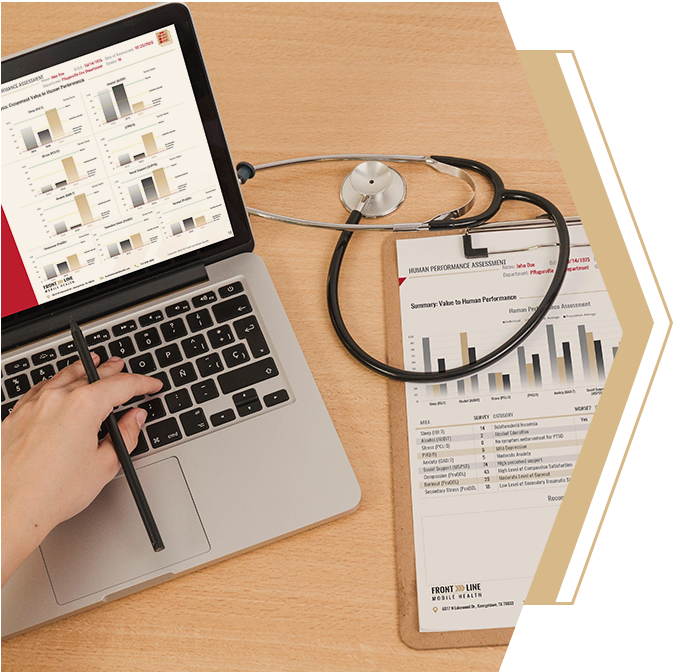Data Analytics & Decision Science

Policy Led by Data
Policies and initiatives that are data-driven are more likely to survive the budgeting process and other external pressures a department chief has to deal with daily. We have learned the best way to empower leaders to make change is to arm them with the objective medical evidence — the data that can help refine processes, modify policy, create new strategic goals, and account for the taxpayers’ dollars.
Proprietary Electronic Health Records
While many healthcare systems have electronic health records, they lack the specificity and ability to mine the appropriate health surveillance metrics that are unique to public safety. In recognition of this, we created and continue to enhance a proprietary electronic health record that allows us to see and report on all the data we collect. This data, and the knowledge that can be ascertained from it, is the return on investment. Our data analytics and reporting tools allow individual public safety professionals to see their health metrics over time. It also allows department leaders to see masked and aggregate data on the most pressing issues facing the department such as obesity, cancer, blood pressure, dyslipidemia, cardiac dysfunction, anxiety, depression, sleep disturbance, substance use, and posttraumatic symptoms.


A Shared Goal
Our goal in providing this level of detail and analysis to our clients is to empower them with the right information to make informed departmental improvements and serves as a catalyst for meaningful change that is likely to improve opportunities for the department’s success. This information can also be used more holistically and broadly as a tool for internal strategic planning and management.
Operations Research and Systems Analysis
Front Line’s unique data approach produces analyses and decision support deliverables to facilitate strategic, operational, and tactical decisions.
This includes the application of quantitative and qualitative analysis to the organization’s decision-making processes by developing and operationalizing probability models, statistical inference, simulations, optimizations, and economic models. Applying this data to the complex problems facing invested leaders ensures quality decision making, even in the most challenging environments.


Geospatial Intelligence
The ability to visualize and analyze location-based data — such as operational incidents, standards of cover, and risk analysis — empowers organizational leaders to make critical decisions based on more than just numbers alone. The power of geospatial intelligence resides in the ability to better understand the “why” based on the “where.”
Within the public safety sector, it is very common that data points are tied to physical locations and times. Leading edge organizations explicitly take advantage of geospatial-based analytics to solve the most complex problems and reveal opportunities previously unseen. Front Line uses geographic information systems (GIS) to provide leaders with the ability to visualize, analyze, and provide understanding to the location information that most impacts them on a daily basis.
Standards of Cover
Front Line uses our Data Analytics and Decision Science practices, including our geospatial intelligence, to help our agency partners define their standards of cover, ensuring they have all the data necessary to make risk-management decisions for critical emergency situations.

